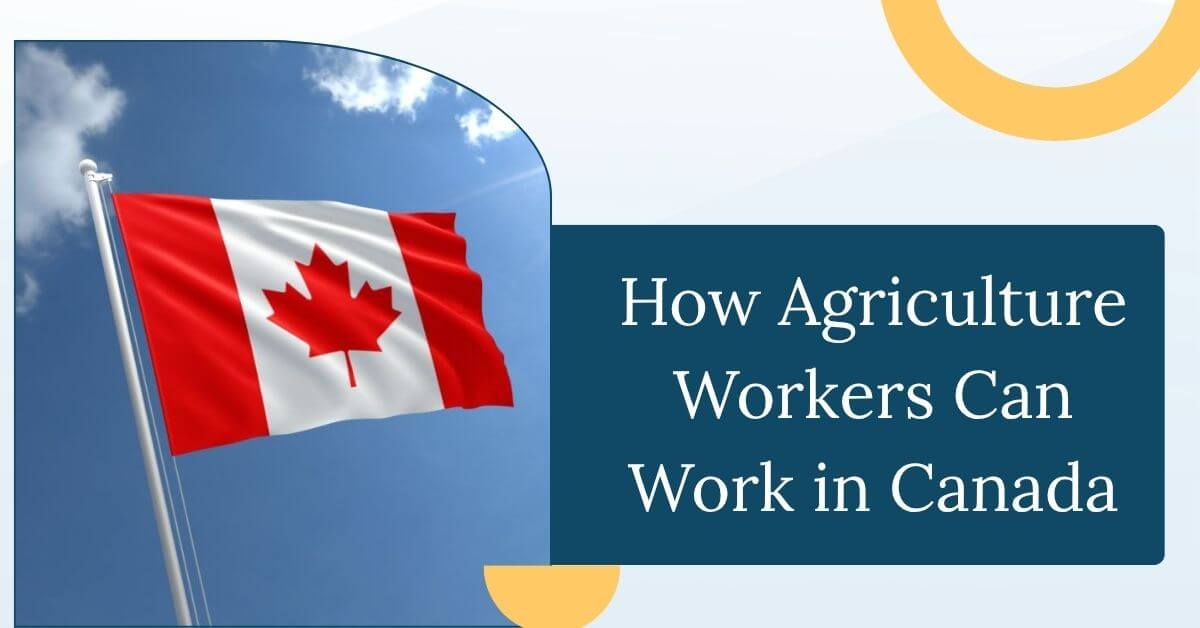A big part of Canada’s income is agriculture. About two million jobs are created by this business across the country. Even though there is a lot of demand in this field, companies are still having a hard time finding workers.
There are a lot of programs that help businesses to hire temporary foreign workers to fill open positions. You’re on the right page if you want to take this route to work in Canada. We are going to talk about how people who work in agriculture can get a job with a Canadian company. Read on to learn more.
Check More: How to Get a Canada LMIA Work Visa
Seasonal Agriculture Worker Program:
There are a few ways for TFWs to get jobs in Canada’s farming business. The Seasonal Agriculture Worker Program is the most frequent choice. There are a lot of seasonal jobs in agriculture that only need people for a certain amount of time.
SAWP gives businesses the chance to hire temporary workers for the time of year they need them. This keeps things moving during busy times.
If a TFW gets a job offer from an agriculture company that is eligible for SAWP, they can apply to this program. Besides that, the candidate must have been hired by the government. Some countries are the only ones taking part in this program. Those who want to apply can do so if they are from one of these countries:
- Anguilla
- Antigua and Barbuda
- Barbados
- Dominica
- Granada
- Jamaica
- Mexico
- Montserrat
- St. Kitts-Nevis
- St. Lucia
- St. Vincent and the Grenadines
- Trinidad and Tobago
Temporary Foreign Worker Program: Agriculture Stream:
You can work in Canada’s agriculture business in other ways. You see, not all jobs in farmland are seasonal after all. People with the right skills come from all over the world. Even if you’re not from a country that’s part of the SAWP, don’t worry. It is still possible to apply through the TFWP.
To be eligible for the TFWP Agriculture stream, you must have a job offer from a Canadian company. The company will need to get a Labor Market Impact Assessment (LMIA). This has to be done to make sure that hiring foreign workers doesn’t put Canadians out of work.
After the company gets an LMIA, you can use the government of Canada’s website to apply for a work permit. How long the person can stay in Canada will depend on which hire stream the company uses. The worker can come to Canada and work for two years if they are hired through the low-wage line. People hired through the high-wage stream can stay in Canada and work for up to three years.
Requirements for How Agriculture Workers Can Work in Canada:
Would you like to work in Canada’s farming industry? There are a lot of job opportunities in this industry, from fresh produce to dairy farmers and more. To be qualified for SAWP or TWFP, make sure you check off all of these items.
- Get a job offer from a company that is approved by the LMIA.
- Show proof of work experience that is applicable.
- Results of a medical exam
- Clear record check for crimes
- Proof that you have enough money to stay in Canada
- Agree to leave Canada when your work permit runs out.
Frequently Asked Questions:
-
What visa pathways are available for agriculture workers in Canada?
Eligible workers can apply under the Agri‑Food Immigration Pilot (for permanent residency, now closed after May 14, 2025) or through the Seasonal Agricultural Worker Program (SAWP) for temporary farm work from participating countries like Mexico and Caribbean nations.
-
What are the key requirements for the Agri‑Food Pilot?
Applicants needed a full‑time, non‑seasonal job offer in crop, meat, or greenhouse production; 1,560 hours of eligible Canadian work in the past 3 years; education assessed via ECA; language CLB 4; and proof of settlement funds. The pilot capped at 1,010 applications and ended May 14, 2025.
-
How does the Seasonal Agricultural Worker Program (SAWP) work?
SAWP allows work permits of up to 8 months/year to temporarily fill harvest and planting roles, available only to citizens of Mexico or designated Caribbean countries and requires employer sponsorship under bilateral agreements.

